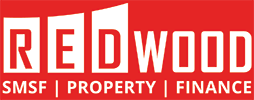The key to utilising an effective SMSF strategy is understanding the tax benefits of SMSF. From investing in shares to borrowing to invest in property, utilising an SMSF can be a key vehicle to securing your retirement nest egg.
A key strategy is SMSF contributions including type of contributions and the tax advantages including tax deductions of each contribution.
Concessional Contributions
From 1 July 2014, the Concessional Contribution cap of $25,000 increased to a new Concessional cap of $30,000, which is good news for those with an effective SMSF Strategy. With indexation frozen over the last two years, the concessional contribution cap has been welcomed by SMSF Trustees/ members as well as SMSF advisers/ professionals. The rise does not impact the temporary increase to $35,000 for those aged 59 or over on 30 June 2013 and again for those aged 49 or over on 30 June 2014.
Therefore, from 1 July 2014, if you are less than 49 years your concessional contribution cap will be $30,000. If you are 49 years or over your cap will be $35,000. Timing of your contributions can also be important. Contributions are counted towards the caps in the year in which they are received and credited by your super fund. As you approach 30 June, please seek advice if you are not sure the contribution will be credited to you account in time.
Tax treatment and advantages of concessional contributions
Concessional contributions are from pre-tax income if you are able to claim a deduction and is treated as assessable income of the fund which means you will pay tax on the contribution.
Non-concessional contributions
The Non Concessional Contribution cap is set at 6 times the Concessional Contribution cap and from 1 July 2014 has increased to $180,000 the Non Concessional Contribution cap will increase to $180,000. With an effective SMSF strategy, you can utilise the bring forward rule allows two years of Non Concessional Contributions to be brought forward into the current year.
If you are under the age of 65, you may be able to contributed up to three times the Non Concessional Cap in a year or $540,000. If you have already triggered the bring forward rule prior to 1 July 2014, your cap will remain at $450,000. If you use the bring forward rule for the year ended 30 June 2015, you will not be able to make a non-concessional contribution until 1 July 2017.
Tax treatment and advantages of non-concessional contributions
Unlike concessional contributions, non-concessional contributions are after-tax contributions and not included in your assessable income.
Personal contributions
Personal contributions include adding to your super if you are not working or contribute into your spouse’s super fund. Personal contributions usually come from your after-tax or business profits. You can only claim a tax deduction for contributions up to the concessional contribution cap and any contributions in excess of the concessional contribution cap will count to the non-concessional contribution cap.
Claiming a deduction
To claim a deduction you will need to complete and lodge a notice of intent with the SMSF and have the notice acknowledged by your fund in writing.
This article was written by Ivan Filipovic – Director at Redwood Advisory
Disclaimer: The content has been prepared without taking account of the objectives, financial situation or needs of a particular individual and does not constitute financial product advice.




